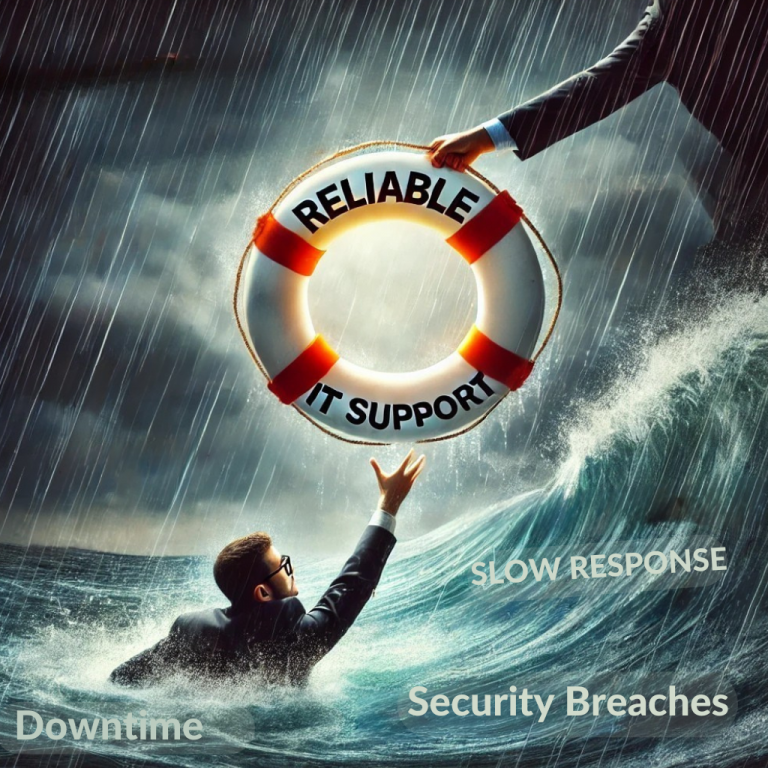Business Email Compromise (BEC) is rapidly becoming one of the most dangerous and costly cyber threats facing businesses today. While these scams have been around for years, cybercriminals are now leveraging AI-powered tools to make them even more sophisticated, convincing, and damaging.
📉 In 2023, BEC scams led to a staggering $6.7 billion in global losses. And the threat is only growing: a recent study by Perception Point found a 42% increase in BEC incidents in the first half of 2024 alone. With AI refining their attack strategies, hackers are more successful than ever at tricking businesses into handing over sensitive information and funds.
If your business isn’t actively defending against BEC attacks, you’re at serious risk. Here’s what you need to know—and how to protect your company before it’s too late.
What Is Business Email Compromise (BEC)?
BEC scams go beyond typical phishing attacks. Instead of relying on malware or suspicious attachments (which email security tools often catch), cybercriminals exploit human trust by impersonating legitimate individuals—executives, vendors, or financial institutions—to deceive employees into:
🔹 Sending fraudulent payments
🔹 Sharing sensitive company data
🔹 Changing banking details for future transactions
These attacks are highly targeted, well-researched, and incredibly difficult to detect, making them one of the most financially devastating forms of cybercrime today.
Why BEC Attacks Are So Dangerous
Unlike traditional cyberattacks that rely on hacking or brute-force malware, BEC attacks exploit trust and social engineering tactics—which is why they’re alarmingly effective. Here’s what makes them so destructive:
💰 Severe Financial Losses
The average loss per BEC attack exceeds $137,000, and in most cases, once the money is gone, it’s impossible to recover.
⏳ Operational Disruptions
A single fraudulent transaction can cripple business operations, triggering financial audits, legal issues, and workflow chaos.
🤝 Reputational Damage
If customer or vendor data is compromised, trust takes a major hit—and in today’s digital age, rebuilding that trust isn’t easy.
📉 Employee Morale & Security Concerns
Employees who fall for a BEC scam may feel guilty and vulnerable, which can impact workplace morale and productivity.
Common BEC Scams You Need to Watch For
Hackers use various deceptive tactics to infiltrate businesses. Here are some of the most widespread BEC schemes:
📌 Fake Invoices – Attackers impersonate a vendor and send a realistic-looking invoice, requesting payment to a fraudulent bank account.
📌 CEO Fraud – Cybercriminals pose as company executives, pressuring employees to send money under tight deadlines.
📌 Compromised Email Accounts – Hackers gain access to a real employee’s account and send fraudulent requests to unsuspecting colleagues.
📌 Vendor Impersonation – A trusted third-party vendor’s email is spoofed, making fraudulent payment requests seem legitimate.
How to Protect Your Business from BEC Attacks
The good news? BEC scams are preventable—if you have the right security measures in place. Here’s what you can do:
1. Train Your Team to Spot BEC Scams
🔹 Educate employees on recognizing phishing emails, especially those marked “urgent” or requesting payment changes.
🔹 Require verbal confirmation for any financial transactions or sensitive requests.
2. Enforce Multi-Factor Authentication (MFA)
🔹 Even if a password is compromised, MFA acts as a safety net, blocking unauthorized access.
🔹 Enable MFA on all email accounts, financial platforms, and cloud applications.
3. Test Your Backups—Before It’s Too Late
🔹 Regularly restore data from backups to ensure they work correctly.
🔹 A faulty backup during a cyberattack could be disastrous for business continuity.
4. Strengthen Your Email Security
🔹 Use AI-driven email filters to detect and block suspicious emails before they reach your inbox.
🔹 Regularly audit access permissions and revoke employee credentials immediately upon departure.
5. Verify Every Financial Transaction
🔹 ALWAYS confirm large payments or sensitive financial requests via a secondary communication channel (e.g., a phone call).
🔹 Never trust last-minute banking changes via email—always verify directly with the requester.
Take Action Before It’s Too Late
Cybercriminals are evolving faster than ever—but you don’t have to be their next victim. By training your team, securing your systems, and verifying financial transactions, you can protect your business from devastating BEC scams.
✅ Want to ensure your business is truly protected?
Start with a FREE Network Assessment to uncover vulnerabilities, secure your systems, and stay ahead of cybercriminals.
Click here to schedule your FREE Network Assessment today!
🚀 Let’s stop BEC attacks before they stop your business. 🚀










